- 3 Ways a Chatbot Can Improve the Onboarding Experience
- How chatbots can improve HR communication and drive efficiency
- Chatbots in HR: Not Just for Self-Service
- How AI in HR can save time and drive efficiency
- Are You Ready for your HR Virtual Assistant?
3 Ways a Chatbot Can Improve the Onboarding Experience
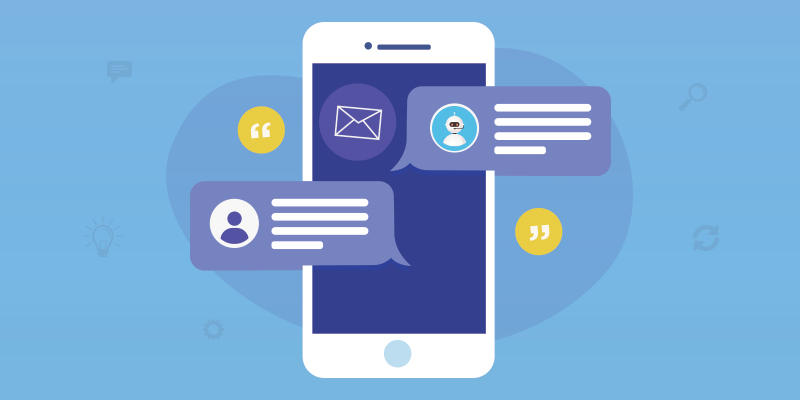
O.C. Tanner’s report on onboarding shows that one in five employees leave a job within the first 45 days. Most of the disengaged employees shared that they received little or no proper training during their onboarding. Not having an onboarding process in place can negatively impact both the employee and employer.
In a survey of HR managers by job site CareerBuilder, 16% said poor or non-existent onboarding lowers their company’s productivity, 14% said it brings on greater inefficiencies, and 12% said it leads to higher employee turnover.
Lower employee engagement leads to lower confidence among employees, lack of communication and trust within the organization and missed revenue targets are among other negative impacts of not having a consistent on-boarding program.
Ben Peterson, CEO of BambooHR reported “nearly 90 percent of employees decide whether to stay or go within their first six months”.
While a poor onboarding can confuse and disappoint your new hires leading them to quit, a well-planned onboarding program can increase your employee productivity and boost organizational potential.
A 2007 study from the Wynhurst Group found that newly hired employees are 58 percent more likely to still be at the company three years later if they had completed a structured onboarding process.
Onboarding can transform your new hires into fully productive employees. It needs to be an interactive process, building trust in the organization.
Refocus Your Employee Onboarding with Chatbots
Your managers, teams and HR staff can often confine within their roles and tasks when your new hires have questions. It may not be their intention to ignore them, but it can cause disappointment.
A chatbot can be always available. It can handle your communication process during onboarding, answering questions like -
How do I request a personal time-off?
What is pay cycle schedule?
How do I submit my time sheet?
Personalized training path to achieve learning goals
Chatbots can guide your new hires through their onboarding training plan. They can also help them manage their calendar and guide through resources. With a chatbot, your new hires don’t need to stop what they are doing and search for information. They can ask the bot and get what they want.
A sustained line of communication to engage your hires
The biggest gain from chatbots is a smooth path to communication. Chatbots can respond with quick answers and just-in-time access to support resources. This creates an interactive and engaging experience for your new hires and keep them engaged.
Reduce the time your new hires need to assimilate into your culture
Your new hires need to understand organizational policies and look for answers to their common questions.
You can save a lot of time for your employees and HR by redirecting their questions and challenges to a conversational bot. These bots can improve your employee experience and reduce your workload.
Engage and Retain your new hires with Chatbots
Chatbots do more than communicate. They can engage your new hires, support their development, and sustain their motivation.
How chatbots can improve HR communication and drive efficiency
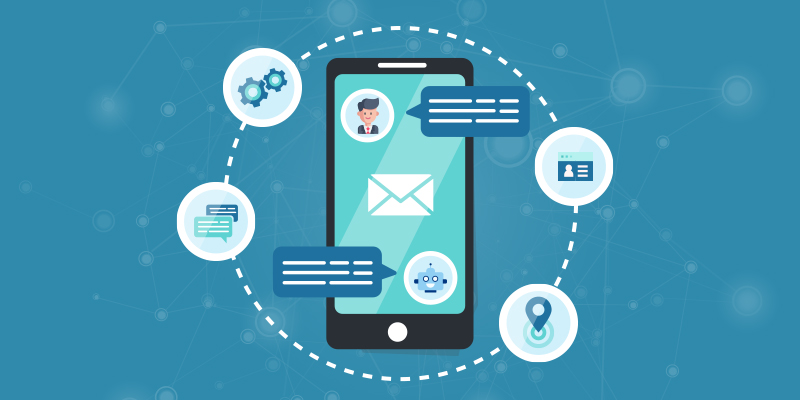
How much time does your HR staff spend looking for information? How much time do they spend answering the same, repetitive questions, day after day?
And…how much time do your employees spend looking for information before they give up and call your overworked staff?
Amidst the daily routine of attending to tasks, achieving targets, coordinating with managers and peers, your people can find it hard to get instant answers or respond to queries.
This can slow down your communication and demotivate your people.
Deploying a chatbot can make your HR process more efficient by handling many tasks and requests formally handled by humans. In areas where rapid communication, instant answers, and the availability of resources drive the user experience, chatbots showed great promise in removing communication bottlenecks.
Chatbots are a special kind of virtual bots that use voice or text to simulate human interaction.
There are countless ways to implement them, limited only by the imagination of their designers, but generally they fall into two types. The primary difference is whether they are driven by rules or intelligent algorithms.
Rules based bots
You can design a basic chatbot to provide programmed answers to specific questions. They are cognitive computing in that they can recognize input and give an appropriate response, but they are not intelligent.
Rules-based bots are easy to train, sometimes requiring only that you upload questions, keywords, and responses, but they don’t learn from their interactions with humans.
These kinds of bots can save your HR staff’s time by answering many of your employees questions they often handle. They can also simplify interacting with your applications interface.
Algorithms based bots
Algorithms drive the intelligent chatbots. When you add AI to chatbots, you get an entirely new experience. A smart chatbot can ask clarifying questions to get you to the right answer. you can train them to recognize speech or text patterns that show emotion, so it can “know” when an employee needs should reach a human. Sophisticated algorithmic chatbots can also be developed to learn from their experiences to provide better service.
How Chatbots can streamline your HR process and bring HR into flow of work
Chatbots in HR can help automate many of your routine repetitive HR tasks and free up your time for critical tasks like having one on one conversations with candidates and drawing insights to improve communications.
-
In recruiting, a chatbot can act as a real-time medium of communication and engagement. It responds to routine questions immediately and reaches out to a human right away when necessary.
-
Chatbots can be trained to offer suggestions for your employee training based on an individual’s career development plan or find recommendations for a new learning path.
-
Chatbots can support your employee onboarding with constant communication offering instant access to crucial resources they need to get accustomed to workplace culture.
-
You can also turn your employee feedback surveys into friendly chatbot conversations that make process interactive.
-
A chatbot can also save your HR staff's time by answering the common questions your employees will have during the open enrolment process.
-
Chatbot can help your employees find important resources right when they need them, serving as a quick resource finder.
As chatbots grow into maturity, they will make both your HR group and the people it serves more connected and productive.
Let chatbots handle your drudgery and create efficiencies that can improve communication and performance in your organization.
Chatbots in HR: Not Just for Self-Service
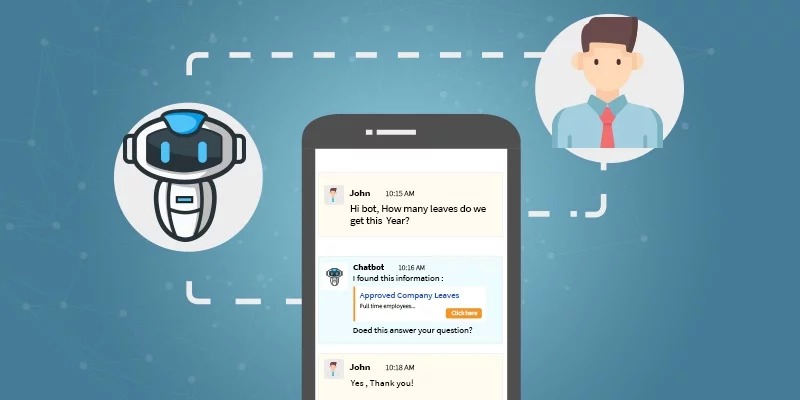
Chatbots are making their way into HR. At the beginning of this wave of change, we predict chatbots will change the relationship people have with HR technology. As the application of this technology matures, it will fundamentally alter the relationships people have with each other.
The Fundamentals of Chatbots
Chatbots are software robots that enable technology to interact with humans on human terms. With a well-trained bot, users can say or type what they need, and the bot will locate and provide information, answer questions, and take any action you train them to do. These virtual assistants can be trained to handle repetitive tasks that would typically require users to log in to an HR application, remember how to use it, and adapt unique their human needs to preconfigured lists of values designed for clean reporting.
With these capabilities, we understand why many organizations choose to apply bot technology to HR self-service as a first effort. It has a profound impact on the user experience, and it makes HR more efficient by handling many tasks and requests formally handled by humans. The quick return on investment makes it easy to build a business case.
However, there is much more to chatbots than efficiency. As chatbots grow into maturity, they will make both your HR group and the people it serves more connected and productive. The underlying technology in chatbots, Robotic Process Automation (RPA), has a significant impact on operating costs, but it also shifts human effort from routine tasks,1 allowing them to focus more on building human relationships that foster creativity and innovation.
How Chatbots Will Change Relationships
How do these efficiencies in communication translate to higher value-add activities, and what are those activities? We explored three situations where we see significant gains.
Chatbots in Recruiting
Communication with job candidates influences how people feel about joining an organization. In a 2017 study, IBM found that only 57% of candidates said they were kept well informed during the hiring process, and only 63% were very satisfied with the candidate experience. Applicants who had a good experience were 38% more likely to accept a job offer. The study also found an impact on attitudes toward the company and subsequent sales.2
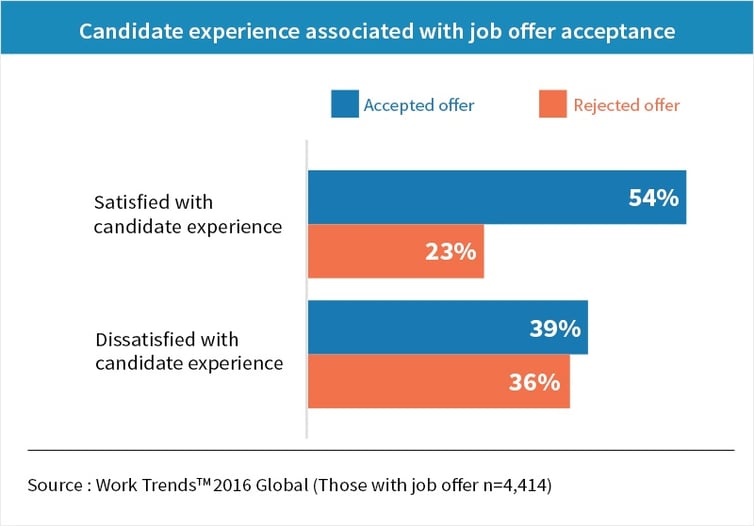
Chatbots handle many of the routine communications that recruiters can often forget, like acknowledging applications and resumes, sending reminders about upcoming tasks, scheduling interviews, and even administering assessments. The big bonus here is that they can help overcome the lapses in communications that make applicants vulnerable to being snatched away by competitors.
What’s the value-add for recruiting?
Recruiters have more time to work with hiring managers. According to research by Bersin by Deloitte, that relationship is the most influential predictor of talent acquisition performance.3
Recruiters have more time to work with prospects and candidates. The most effective recruiters are those who build relationships with potential employees. Top candidates are much more likely to want to work for an organization where they have a positive relationship with people in it.
Chatbots in Learning and Development
L&D has gone through some rapid changes in the past few years. We have new delivery modes in e-learning, instant video, and micro-learning. Adaptive learning driven by artificial intelligence promises to take learning on the job to a level of effectiveness we could not even imagine just a couple of years ago.
All those changes have brought with them a new world of complexity to both L&D staff and the people they serve. Chatbots hold the promise of making that complexity manageable.
Even without AI, chatbots can reduce the complexity of learning for the end-user. Instead of searching through catalogs, course lists, YouTube, the intranet, and who knows where else, users can tell chatbots what they need, and a chatbot will deliver.
Chatbots can be trained to offer up suggestions for learning based on an individual’s career development plan or find recommendations for a new learning path. They could also handle many more time-consuming repetitive and mundane tasks, like managing an individual’s training calendar, locating resources, and producing reports.
Support libraries for administrators can become conversational helpers instead of inanimate lists of technical material. They can even be trained to manage routine, repetitive tasks.
What’s the value-add for learning?
Finally, we can bring learning into the flow of work. What employees need information, learning in the moment, or a refresher on a new procedure, they don’t need to stop what they are doing and search for what they need. They can assign that task to a virtual assistant who will never tire of being helpful. Your people can spend their time learning instead of searching for what to learn.
Chatbots in Performance
The transition from annual performance reviews to ongoing conversations about performance is a long-term culture change project. Anything we can do to facilitate the conversations can be a benefit to both employees and their managers.
Knowledge workers can spend up to 40% or more of their time looking for information they need to do their jobs. Imagine how you could help them by providing a virtual assistant that has indexed every resource in your content repositories.
What’s the value-add for performance?
How about reminders for busy managers? Think about a virtual personal assistant the will do this:
- “It’s been over a week since you talked with Brenda about her project. Should I make an appointment for you?”
- “You asked me to remind you to discuss training progress with your team this morning.”
- “Jack’s report was due yesterday.”
- “Your team meeting is tomorrow. Let’s develop the agenda. You can dictate it to me.”
Imagine how your managers will feel when they can view any employee profile, any report, and their management coaching resources merely by asking for them.
The Limitless Opportunity of Chatbots
The examples given above are only a few of the possibilities for chatbots to improve communication and performance in your organization. Employee self-service is an excellent place to start, but we encourage you to move on to more sophisticated and productive applications as you can. The possibilities are endless.
How AI in HR can save time and drive efficiency
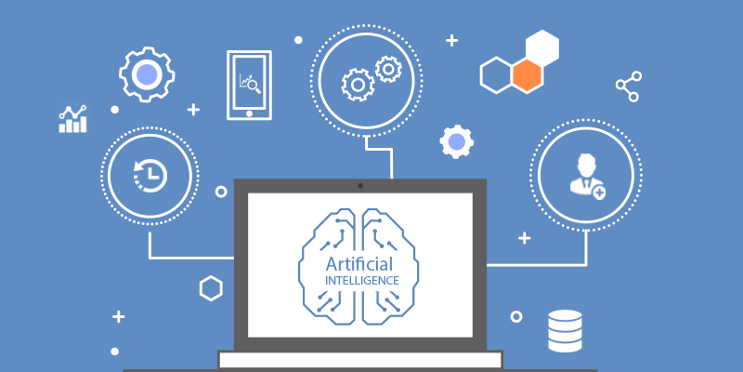
The moment you log into your office mail, you see subject lines like…
Immediate requirement in Sales team
Immediate update required for new hire training
New Compliance Deadlines this month
The Coffee Machine is broken!
Before you can get started, a manager calls to ask you about recruiting status on his engineer requisition.
Many times you miss parts of the conversations as you always have a mobile to your ear and eyes on an email on the monitor.
You turn your head to see a colleague at your desk wanting to chat - which ends with ‘Good Day’. This so-called ‘good day’ actually ends up with many regrets like forgetting to inform a manager about a skype interview schedule, falling back on priorities, tough times with your boss, going home late, and failing at your personal promises.
Your day ends just when you felt it had started. You hardly find time to work on building strategies that elevate your culture and engage talent.
Is more time all you need?
What if you had a tool that not only saves you time but also enhances your effectiveness - a technology tool that can wisely handle your routine tasks like recruiting and onboarding activities, monitoring training and compliance, and coordinating with managers and staff to communicate on updates.
Enhance efficiency by implementing AI in HR
Artificial Intelligence - where we make machines work, think and react much like humans, can be a boon if adapted well to your HR processes.
And the fascinating fact about AI is, the more you work with it, the better it learns and adapts.
AI can effectively manage the day-to-day activities of your HR team and here are few ideas to help you start thinking about it.
How AI can help Recruiting improve candidate profiling
Implementing AI in your recruiting processes saves time. AI can help you identify the right candidate profile that matches your skill set. While you let your machine deal routine repetitive tasks, you can work on critical things like having one on one conversations with candidates and drawing insights to improve communications.
/Chasma%20Blog%20Post%20Images/How%20AI%20in%20HR%20can%20save%20time%20and%20drive%20efficiency_IC.png?t=1524554393390&width=646&height=123&name=How%20AI%20in%20HR%20can%20save%20time%20and%20drive%20efficiency_IC.png)
While you onboard, reach out to your New Hires with answers to their questions - before they ask
During the process of onboarding, you have to coordinate with the new hires right from day one until they establish strong relationships with peers and managers. Many times it is hard to reach out to every new hire and provide instant guidance.
This is where AI can help you. You can deploy an AI-based virtual assistant that will tackle new hire queries and offer answers so you can focus on tasks that need human intervention.
In your training, let AI recommend the right courses for your employees
AI can analyze the kinds of training that have been successful to make better recommendations for your employee development plans.
Achieve smoother communication flow
With AI, you can train your machine to respond like the way you do. Your employees need not wait for answers. They can get instant help with their questions.
AI will give you the gift of time to focus on elevating your company culture and improving the employee experience. Not only that - your AI will provide spontaneous service by finding answers much faster than a human can.
Are You Ready for your HR Virtual Assistant?
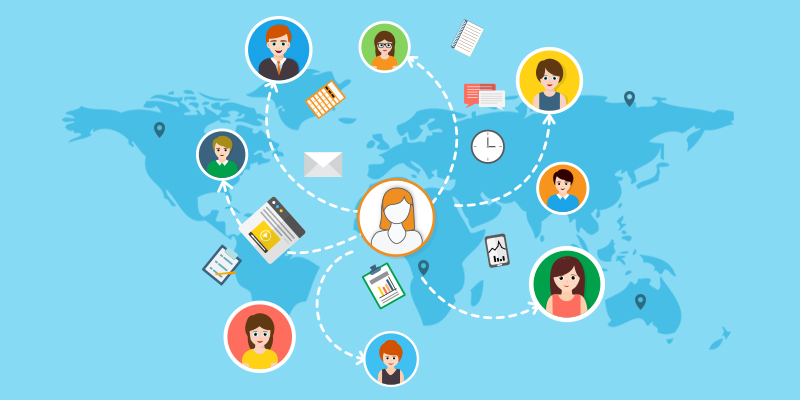
Chatbots have arrived in HR, and we are celebrating. After three decades of chasing the user experience dream, we may finally have someone (or something) that won’t complain about doing “HR stuff.”
Before we automated HR, we had armies of people who made a living doing the tedious manual work of handling employment and payroll transactions. For the employee, requesting vacation time was a matter of scratching a couple of dates on the paper form and handing it off to a supervisor, who handed off to the HR clerical staff. From the employee perspective, taking a day off meant saying “Hey Boss, I need to take my kid to the doctor on Friday,” leaving the manager and HR to handle the administrivia.
The Quest for HR Efficiency
The first wave of HR automation made HR more cost-efficient. The army of workers became much smaller, and fewer people made a living doing tedious computer and manual work.
Then came self-service, when HR pushed the work out to employees and their managers.
They hated it. Managers and employees flooded HR with calls about how to handle transactions, so a cadre of administrative worker arose to handle the tasks for everyone in the business unit or workgroup because people balked at learning how to use the software.
With the growth of cloud platforms, talent management platforms, payroll, and time and attendance, competition drove the effort to make those systems easy enough for anyone to use.
Why People Are Not Overjoyed about the New User Experience
People still hated it. Organizations deployed wave after wave of new systems with a lot of “change management” and hype, only to see the enthusiasm dissipate over time.
The trouble is that nobody who already has a job to do in the organization wants to do “HR stuff.” We don’t know anyone who becomes joyous at the prospect of applying for Family or Medical Leave. We have never heard anyone say, “I’m so happy! I get to fill out my online timecard!” or “I love doing those development plans!”
In practice, we just want to get the HR stuff done so we can get back to what we like doing.
The Tedium Is Still with Us
Today, instead of those vast armies of clerical workers, we have skeleton HR staffs populated by professionals and semi-professionals. They spend up to 30 or 40% of their time answering questions from managers, employees, prospective employees, and ex-employees about how to manage their transactions or where to find the information they need to do it.
Virtual Assistants Have Arrived
Relief is here. Cognitive computing, natural language processing (NLP), and artificial intelligence (AI) are working with text and voice messaging to create virtual assistants in our personal lives. Millions of us are using Cortana, Siri, Alexa, and Google Home.
We want the same experience at work. HR technology providers are responding, but small startups and niche providers are moving faster. Chatbots and text bots are currently used primarily in customer self-service, but they are moving quickly into HR, among other areas.[1]
Now is an excellent time for companies to get in on the ground floor of HR virtual assistants to improve their productivity and to influence the direction these products take.
Recommendations
Before you jump into the mix, there are four things we recommend for you to think about as you prepare for your virtual assistants.
- Evaluate solutions for compatibility with other emerging technology. A virtual assistant that stands alone will become an administrative burden. A textbot or chatbot should be compatible with others used in business including Cortana, Siri, and Alexa for Business. It should easily integrate into your HR software platforms, and be fully compatible with collaboration software, such as Microsoft Teams and Slack.
- Work with other cognitive computing initiatives across your organization to build a shared lexicon.
- Make it easy for users to report issues and suggestions by integrating the function directly into your virtual assistant. Automate the information-gathering for analysis so your users will be more willing to help.
- Be transparent. Tell your people what you are doing, what information you are gathering, and how you will use it. And, while it almost goes without saying, it is better to say it – don’t pretend it is not a robot.
Sign up for more of our conversation about virtual assistants and the future of work. We look forward to hearing of the success stories of having assistants who are happy to do that “HR stuff” we all hate to do.
Chasma Place, is an independent source for solutions that will help you keep pace with changes in the way your people work without ripping and replacing your existing systems.
